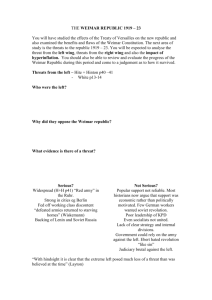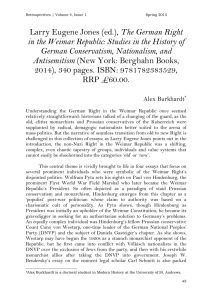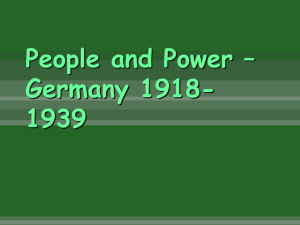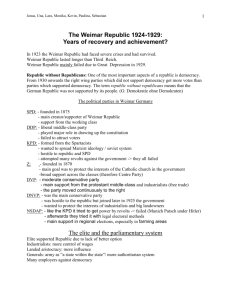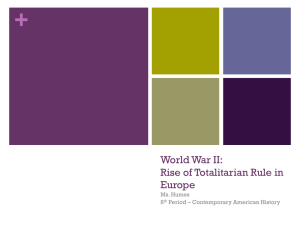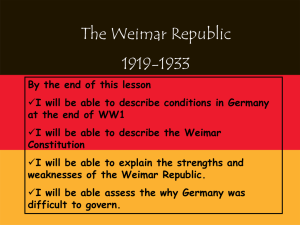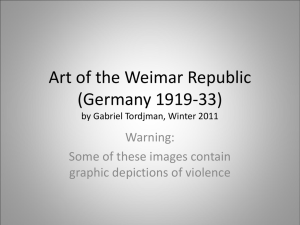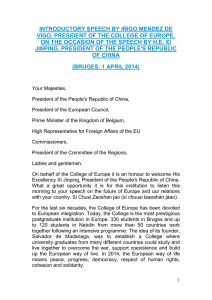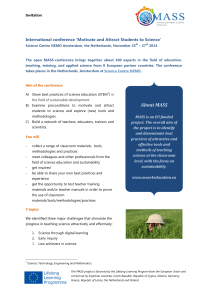Hindenburg and political stability: the working of
advertisement
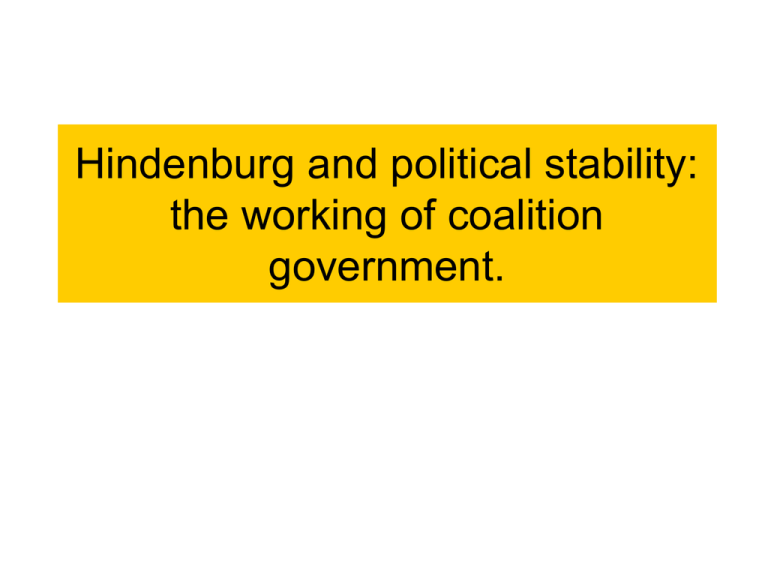
Hindenburg and political stability: the working of coalition government. Connector • Match the cards up • Leader/beliefs/names Outcomes • All students to know the role of Hindenberg • Most students to see how stable the government was • Some to see threats to the government Input • The stalemate in politics was reinforced by the new President Hindenberg after Ebert died in 1925 • Elected in April 1926 • This was to have far reaching consequences due the powers given to the President by the new Republic • V Hindenberg- 14.6 million votes • Marx of Centre party- 13.7 million • Thalmann KPD- 1.9 million Hindenberg- The man • Veteran of Franco Prussian War and World War 1 • He was Conservative and anti socialist • He could not control the constitution as it was his duty to protect it, but he could affect how it operated • He was seen as the Ersatzkaiser (substitute emperor) • He did this by using his presidential powers, as prescribed by the constituent Part 2 However • He had no real sympathy for the republic or its values • Many of his supporters were anti-republican • He preferred to include the DNVP where possible and exclude the SDP • He believed that the government should move towards the right • This would not have real implications until after 1929 Conclusion • What implications for the Weimar republic does the election of von Hidenberg have? Task • Research red book p 98 • Write a profile on Hindenberg Grand Coaltion • 1926- Hans Luther formed a minority coalition with the Centre Party / DVP and DNVP, but was soon dissolved after a vote of no confidence • William Marx became Chancellor in May 1926, and a referendum took place on the confiscation of royal property but failed. • The government was weak and relied on the same parties as its predecessors for support, this time the SPD who withdrew their support and the coalition collapsed to be replaced by Luther. Review • How stable was the Weimar Republic under von Hindenberg?
